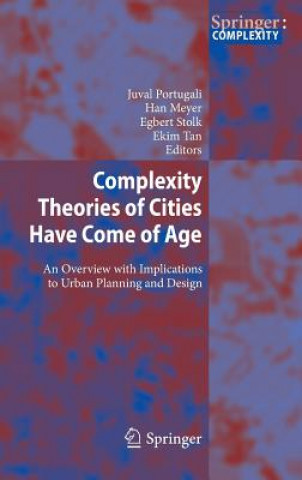
Code: 01659027
Complexity Theories of Cities Have Come of Age
by Juval Portugali, Han Meyer, Egbert Stolk
Today, our urban centres are an embodiment of the complex, historical co-evolution of knowledge, desires and technology. Our activities co-evolve with our aspirations,§mediated by the existing technologies and social structures. T ... more
- Language:
 English
English - Binding: Hardback
- Number of pages: 434
Publisher: Springer-Verlag Berlin and Heidelberg GmbH & Co. KG, 2012
- More about this

139.60 €

Low in stock at our supplier
Shipping in 12 - 17 days
Potřebujete více kusů?Máte-li zájem o více kusů, prověřte, prosím, nejprve dostupnost titulu na naši zákaznické podpoře.
Add to wishlist
You might also like
-

Sixties Boys on Tour
11.46 € -13 % -

Flotsam and Jetsam and the Stormy Surprise
9 € -13 % -

Feathered and Fierce
35.74 € -

Clandestine Occupations
18.12 € -1 % -

Czech Republic, Prague, Map Pack Bundle
26.31 € -

3 to Get Ready
24.06 € -

Basic Math & Pre-Algebra For Dummies
24.88 € -5 % -

Codes of Hammurabi and Moses - Archaeology Discovery
25.08 € -
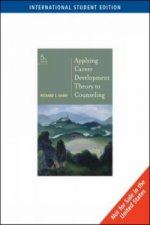
Applying Career Development Theory to Counseling, International Edition
121.98 € -

Dior: Couture
106.52 € -11 % -

Education Of The Stoic
16.89 € -

Moudrost vyznání víry
3.47 € -13 % -

Einfuhrung in die Rechtswissenschaft
48.03 € -4 % -

Aktuelle Fragestellungen im Bereich Ausbildung
42.50 €
Give this book as a present today
- Order book and choose Gift Order.
- We will send you book gift voucher at once. You can give it out to anyone.
- Book will be send to donee, nothing more to care about.
More about Complexity Theories of Cities Have Come of Age
You get 345 loyalty points
 Book synopsis
Book synopsis
Today, our urban centres are an embodiment of the complex, historical co-evolution of knowledge, desires and technology. Our activities co-evolve with our aspirations,§mediated by the existing technologies and social structures. The city represents the accretion and accumulation of successive layers of collective activity , structuring and being structured by other, increasingly distant cities, reaching now right around the globe. §This historical and structural evolution cannot therefore be understood or captured by any set of fixed mathematical relations such as simultaneous, or even dynamic, equations. Structural changes imply that the patterns of growth, and their underlying reasons change over time, and therefore that any model attempting to represent changing urban morphology and patterns of flow, must be dynamic, based on the mechanisms that drive the changes occurring at a given moment. §This carefully edited post-proceedings volume gathers a snapshot view, by leading researchers in field, of current complexity theories of cities. In it, the achievements, criticisms and potentials yet to be realized are reviewed and the implications to planning and urban design are assessed.Today, our urban centres are an embodiment of the complex, historical co-evolution of knowledge, desires and technology. Our activities co-evolve with our aspirations,§mediated by the existing technologies and social structures. The city represents the accretion and accumulation of successive layers of collective activity , structuring and being structured by other, increasingly distant cities, reaching now right around the globe. §This historical and structural evolution cannot therefore be understood or captured by any set of fixed mathematical relations such as simultaneous, or even dynamic, equations. Structural changes imply that the patterns of growth, and their underlying reasons change over time, and therefore that any model attempting to represent changing urban morphology and patterns of flow, must be dynamic, based on the mechanisms that drive the changes occurring at a given moment. §This carefully edited post-proceedings volume gathers a snapshot view by leading researchers in field, of current complexity theories of cities. In it, the achievements, criticisms and potentials yet to be realized are reviewed and the implications to planning and urban design are assessed.
 Book details
Book details
Book category Books in English Earth sciences, geography, environment, planning Regional & area planning Urban & municipal planning
139.60 €
- Full title: Complexity Theories of Cities Have Come of Age
- Subtitle: An Overview with Implications to Urban Planning and Design
- Author: Juval Portugali, Han Meyer, Egbert Stolk
- Language:
 English
English - Binding: Hardback
- Number of pages: 434
- EAN: 9783642245435
- ISBN: 3642245439
- ID: 01659027
- Publisher: Springer-Verlag Berlin and Heidelberg GmbH & Co. KG
- Weight: 800 g
- Dimensions: 238 × 164 × 29 mm
- Date of publishing: 04. February 2012
Trending among others
-
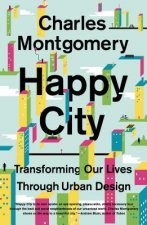
HAPPY CITY TRANSFORMING OUR LIVES
15.97 € -19 % -
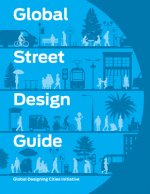
Global Street Design Guide
52.54 € -7 % -

Rebel Cities
14.74 € -8 % -

Power Broker
32.77 € -23 % -
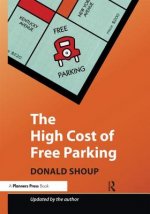
High Cost of Free Parking
53.97 € -

Parking and the City
76.71 € -

Detroit
17.61 € -3 % -
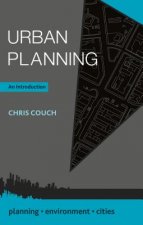
Urban Planning
66.57 € -

Smart Growth Manual
34.20 € -

Visions of the City
41.88 € -5 % -

How Real Estate Developers Think
46.29 € -10 % -

Capital City
17.61 € -
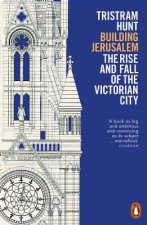
Building Jerusalem
18.73 € -23 % -
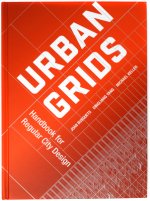
Urban Grids
54.28 € -15 % -

Income Approach to Property Valuation
91.36 € -

Urban Land Use Planning, Fifth Edition
96.99 € -4 % -

Genocide Matters
69.13 € -

Urban Planning for Dummies
22.42 € -21 % -

Principles of Brownfield Regeneration
32.25 € -

Eco-Cities
319.57 € -

Smart Urban Regeneration
90.74 € -
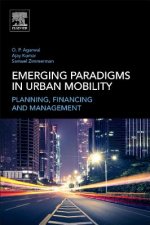
Emerging Paradigms in Urban Mobility
173.20 € -

Inventing Future Cities
32.15 € -13 % -

City Rules
43.83 € -

Global Models of Urban Planning
56.74 € -

But They All Come Back
58.17 € -

Beyond Mobility
55.40 € -

Inner City Renovation
20.48 € -5 % -
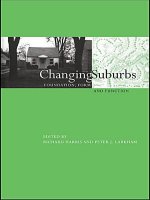
Changing Suburbs
59.30 € -

Culture and the City
81.11 € -

City
46.39 € -

Managing Urban Mobility Systems
141.55 € -

Municipal Dreams
13.82 € -5 % -

City Rules
73.12 € -

15-Minute City
10.23 € -13 % -

Greenfields Brownfields And Housing Development
195.01 € -

How Real Estate Developers Think
105.59 € -

Urban Planning
221.24 € -

Urban Drainage Practice
178.01 € -
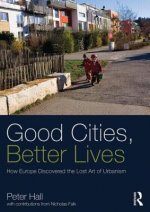
Good Cities, Better Lives
84.19 € -

Zollverein
41.17 € -5 % -

Smart City Emergence
173.20 € -

Planning and Conflict
97.09 € -

Urban Fix
64.11 € -

Concrete and Clay
37.07 € -13 % -

Green Oslo
217.86 € -
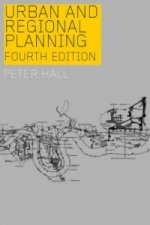
Urban and Regional Planning
71.79 € -

Urban Regeneration
114.61 € -10 % -
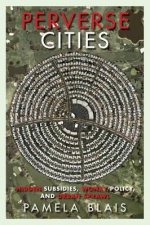
Perverse Cities
49.87 € -10 %
Collection points Bratislava a 2642 dalších
Copyright ©2008-24 najlacnejsie-knihy.sk All rights reservedPrivacyCookies


 15549 collection points
15549 collection points Delivery 2.99 €
Delivery 2.99 € 02/210 210 99 (8-15.30h)
02/210 210 99 (8-15.30h)